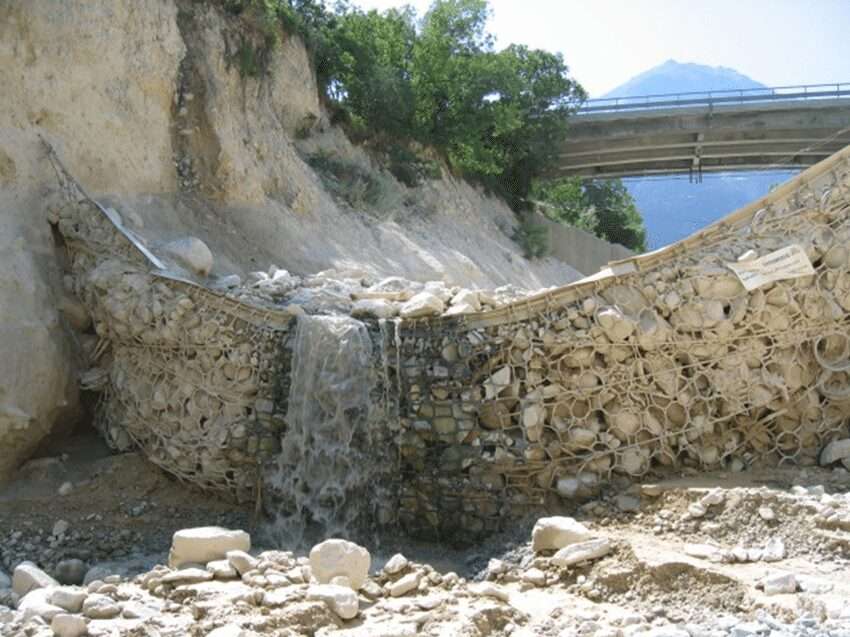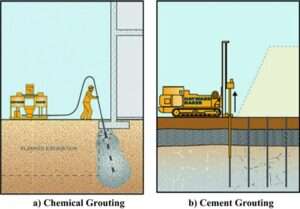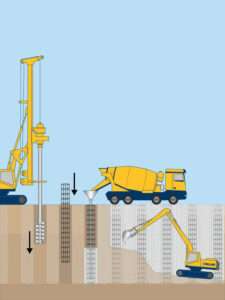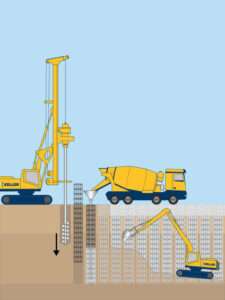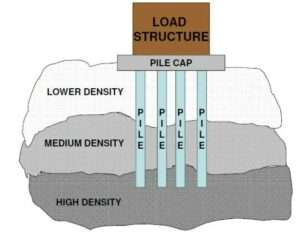Debris flows, characterized by fast-moving mixtures of water, soil, rocks, and organic materials, pose significant risks to both infrastructure and communities in mountainous or hilly regions. These flows can occur suddenly and with little warning, making them particularly dangerous. To mitigate the damage and prevent loss of life, debris flow barriers serve as essential protective systems designed to control and stop these destructive forces before they reach populated areas or vital infrastructure. This article explores the role of debris flow barriers in hazard control and their importance in modern engineering solutions for disaster prevention.
1.What are Debris Flow Barriers?
Debris flow barriers are specially designed structures intended to prevent, redirect, or dissipate the energy of debris flows before they cause significant harm. These barriers are typically constructed in areas prone to debris flows, such as steep riverbeds, mountain slopes, and valleys that have been identified as high-risk zones. The primary function of debris flow barriers is to stop debris from advancing into vulnerable areas like roads, villages, or farmland by intercepting and controlling the flow of materials.
A typical debris flow barrier is composed of various elements that can include solid walls, mesh systems, energy-absorbing structures, and catchment basins. The design and materials used depend on factors such as the intensity of debris flow, slope gradient, and the type of terrain.
2.Types of Debris Flow Barriers
There are several types of debris flow barriers, each offering different benefits depending on the specific characteristics of the location and the anticipated severity of debris flows.
Flexible Mesh Barriers
Flexible mesh barriers are one of the most common types of debris flow barriers, especially in areas with moderate debris flow intensity. These barriers typically consist of high-tensile wire mesh or fabric that can be attached to posts or anchors and stretched across the flow path. The mesh captures debris while allowing water to pass through, reducing the pressure on the barrier and preventing overflow.
- Key Features:
- Energy Dissipation: The flexible mesh deforms under the impact of debris, absorbing the energy and reducing the risk of damage to the barrier structure.
- Adaptability: The mesh can be adapted to fit various slopes and terrains, making it a versatile solution.
- Cost-Effective: Flexible mesh barriers are relatively low-cost compared to other barrier types and can be installed quickly.
Concrete or Steel Barriers
Rigid barriers made from concrete or steel are more robust and are typically used in areas with high debris flow risk or where larger flows are expected. These barriers are designed to stop the debris flow completely, preventing it from advancing any further into populated areas or infrastructure.
- Key Features:
- High Strength: Concrete and steel barriers provide the strength needed to stop the largest debris flows, especially those that may include large boulders or rocks.
- Permanent Protection: These barriers are typically installed as permanent features and require minimal maintenance after installation.
- High Cost: Due to their materials and construction requirements, concrete or steel barriers are generally more expensive than flexible mesh systems.
Catchment Basins
Catchment basins are engineered structures designed to collect debris flows and redirect them away from critical areas. These basins are often used in conjunction with other types of barriers and may consist of large, reinforced concrete or earth-filled pits. The catchment basins allow debris to accumulate and settle, preventing it from flowing further downstream.
- Key Features:
- Debris Containment: Catchment basins capture and hold debris, reducing the risk of downstream flooding or damage.
- Flood Control: These basins also provide some degree of flood control by capturing water runoff and debris flow before it can travel into populated areas.
- Maintenance Needs: While catchment basins can be effective, they require periodic cleaning and maintenance to ensure that they remain functional during subsequent events.
Retaining Walls and Dams
In some locations, retaining walls or small dams are constructed to hold back debris flows. These structures are designed to block the flow of materials completely, often with the added feature of being able to withstand significant hydraulic pressure from water combined with debris. Retaining walls are typically constructed from reinforced concrete, while dams may be made from earth materials or a combination of earth and concrete.
- Key Features:
- Comprehensive Control: These barriers provide strong and reliable protection, often in areas where other solutions are less effective.
- Large-Scale Projects: Retaining walls and dams are often used in large-scale projects to protect entire valleys or riverbeds from debris flows.
- High Expense: These systems are typically more expensive and involve complex engineering and construction processes.
3.Advantages of Debris Flow Barriers
Debris flow barriers offer several key advantages that make them an essential tool in disaster mitigation:
Protection of Infrastructure
Debris flows can cause severe damage to infrastructure such as roads, bridges, railways, power lines, and residential buildings. By intercepting and controlling the flow of debris, debris flow barriers protect these vital structures from destruction. This not only prevents costly repairs and disruptions but also ensures the safety of communities living in vulnerable areas.
Reducing Loss of Life
Debris flows are often sudden and unpredictable, making them highly dangerous to people living in affected areas. Debris flow barriers significantly reduce the risk of fatalities and injuries by preventing debris from reaching populated areas. By stopping debris flows in their tracks, these barriers act as a safety net for communities at risk of these natural hazards.
Minimizing Environmental Impact
Debris flow barriers can help minimize the environmental damage caused by debris flows. By preventing debris from flowing into rivers, streams, and forests, these barriers protect ecosystems and wildlife habitats. Moreover, in areas prone to erosion, barriers can help reduce soil loss and maintain vegetation, which is crucial for sustaining local biodiversity.
Cost-Effectiveness
Compared to other forms of natural disaster mitigation, debris flow barriers are relatively affordable, particularly when considering the long-term benefits they provide. Once installed, these barriers can function for many years with minimal maintenance. This makes them a cost-effective solution for communities and governments facing limited budgets for disaster risk management.
Flexibility and Scalability
Debris flow barriers can be customized to suit the specific needs of a given area. Depending on the size of the flow, terrain, and budget, engineers can choose the most appropriate type of barrier to ensure maximum effectiveness. Additionally, barrier systems can be expanded or modified as needed, allowing for scalability to address growing risks.
4.Best Practices for Installing Debris Flow Barriers
Site Assessment
Before installing debris flow barriers, a comprehensive site assessment is essential. Engineers must evaluate the risk factors, including the history of debris flows, slope steepness, rainfall patterns, and the potential size of future flows. This information helps determine the type and scale of the barrier required, ensuring that it can handle the expected debris flow conditions.
Design Considerations
The design of debris flow barriers must take into account the specific characteristics of the site. For example, flexible barriers may be more suitable for areas with lighter flows, while rigid barriers are better suited for locations with larger or more energetic flows. Other considerations include material selection, durability, and environmental impact.
Installation Process
Debris flow barriers should be installed by experienced professionals to ensure that they are properly engineered and positioned. Factors like slope stability, drainage systems, and anchoring methods must be carefully considered during installation. For rigid barriers, ensuring structural integrity is a critical part of the process.
Ongoing Monitoring and Maintenance
After installation, ongoing monitoring and maintenance are vital to ensure the continued effectiveness of debris flow barriers. Regular inspections should be conducted to identify signs of wear, erosion, or damage. If any issues are detected, timely repairs or reinforcements should be made to prevent failure during the next debris flow event.
Conclusion
Debris flow barriers are an essential component of modern hazard mitigation strategies, providing vital protection to both infrastructure and people in areas vulnerable to debris flows. Whether using flexible mesh systems, concrete barriers, or retaining walls, these protective measures offer effective and cost-efficient solutions to control and redirect debris flows, reducing the risk of property damage, injury, and loss of life. As climate change and increasing urbanization continue to impact natural disaster risks, the importance of implementing debris flow barriers will only grow, offering communities greater resilience in the face of nature’s unpredictable forces.


